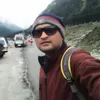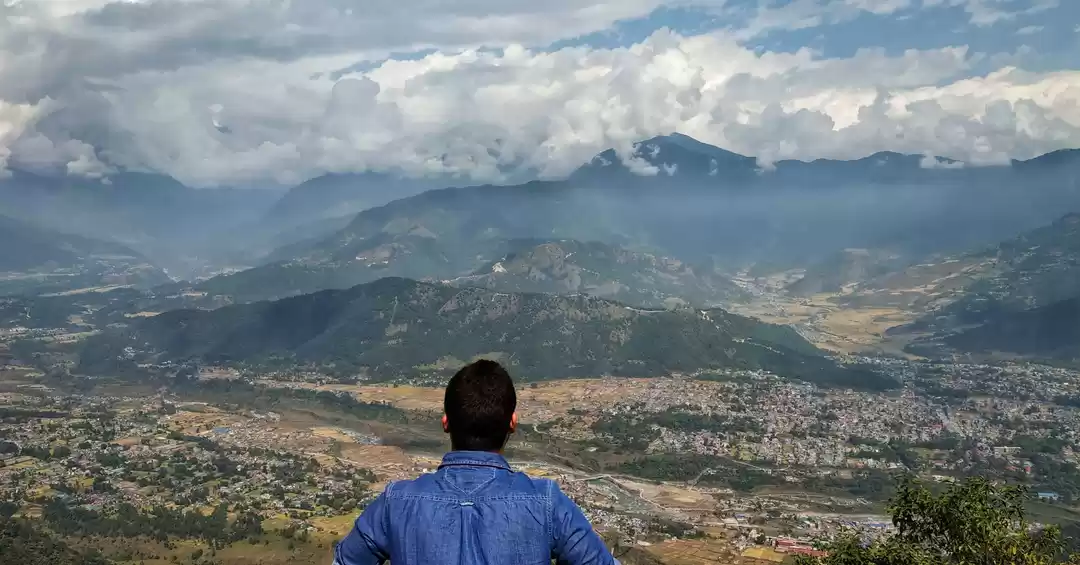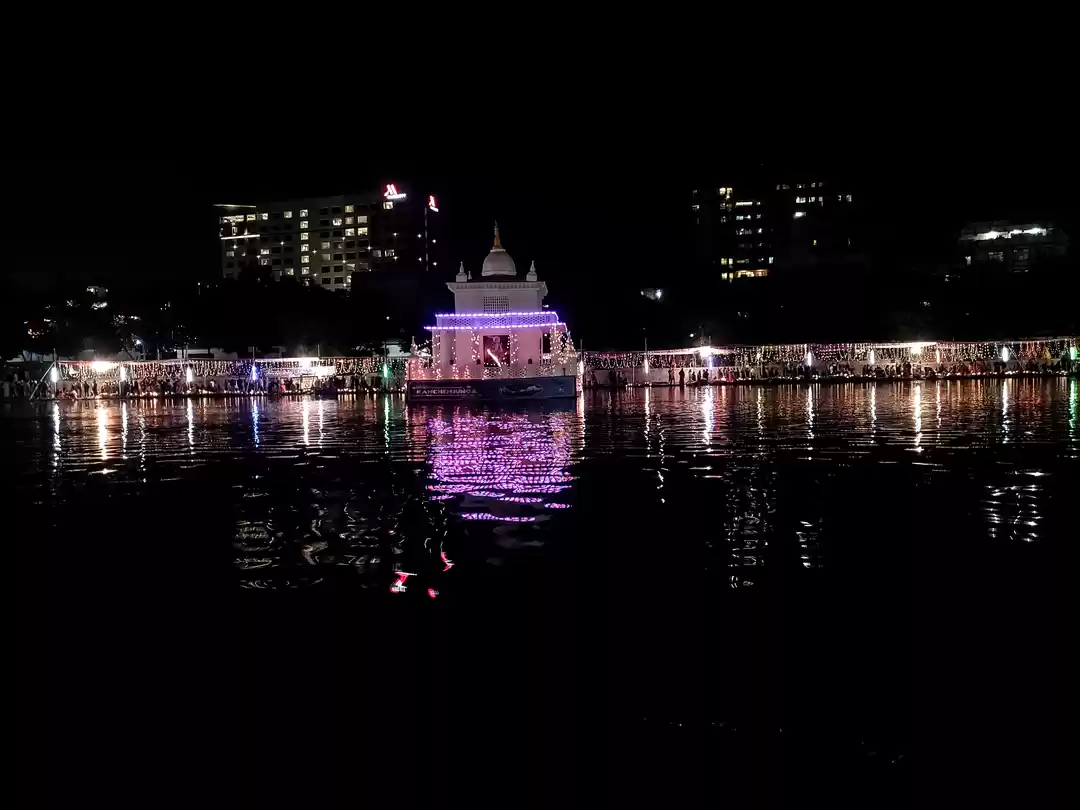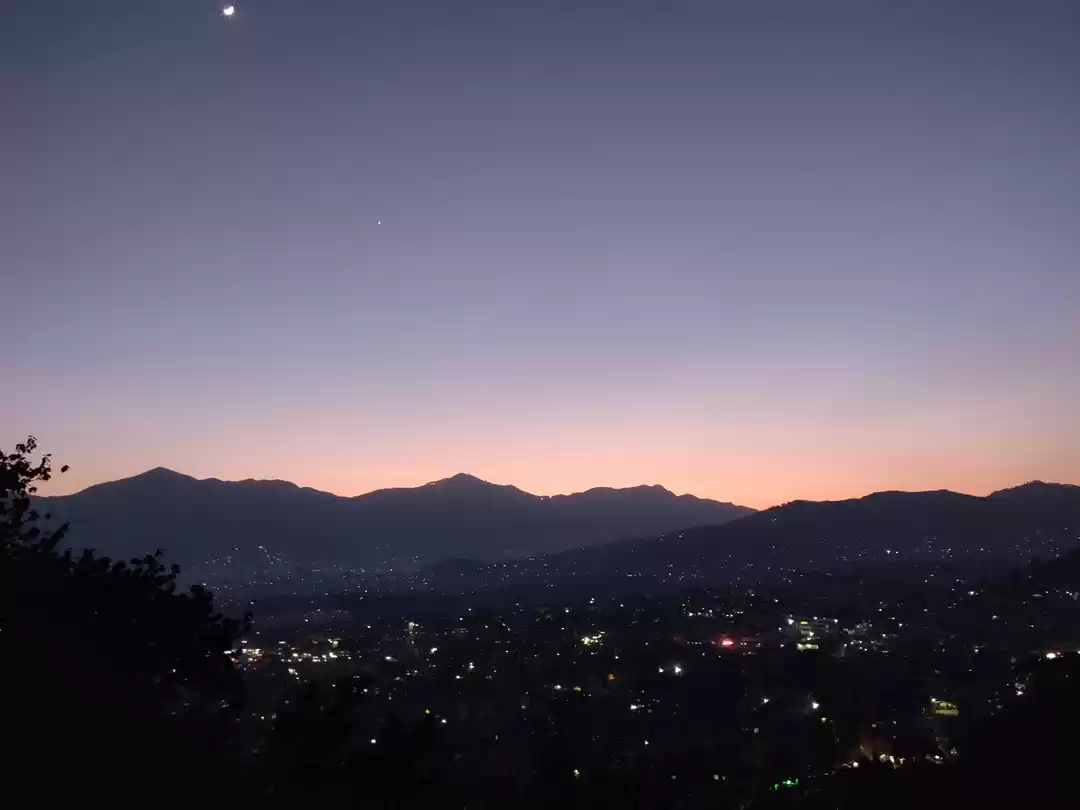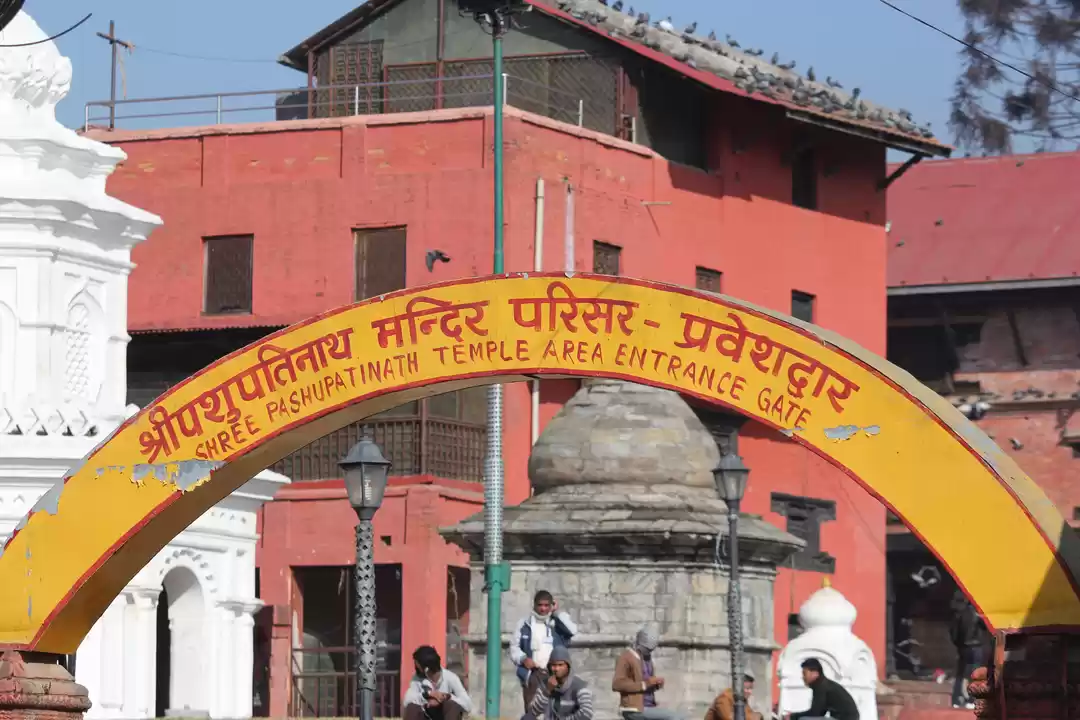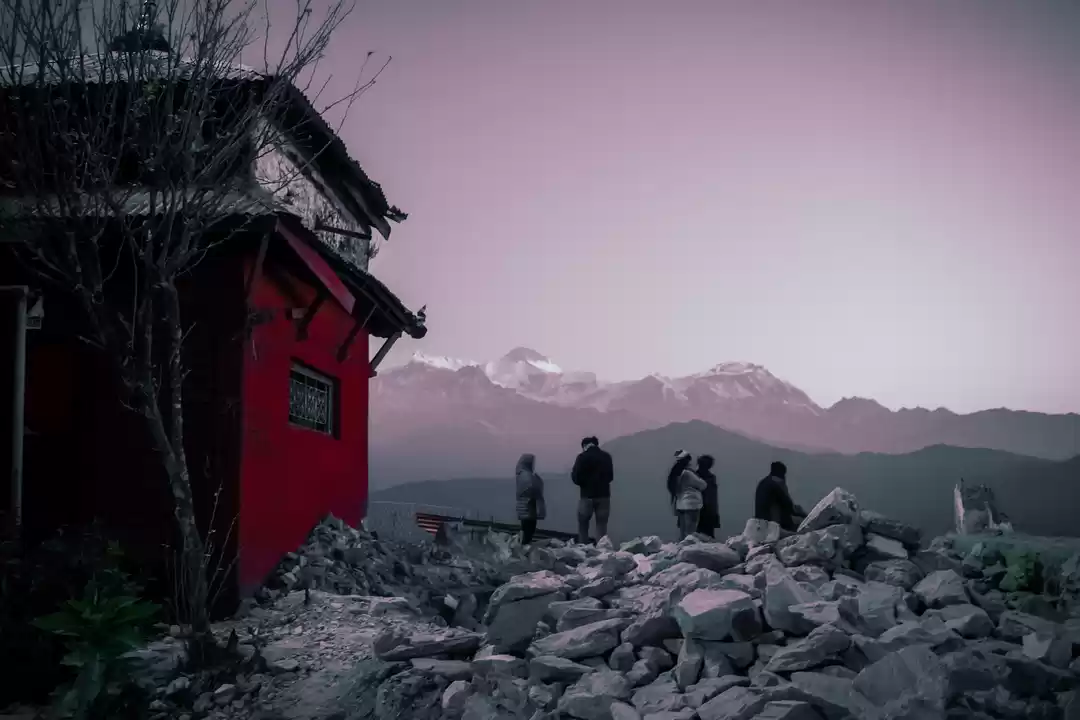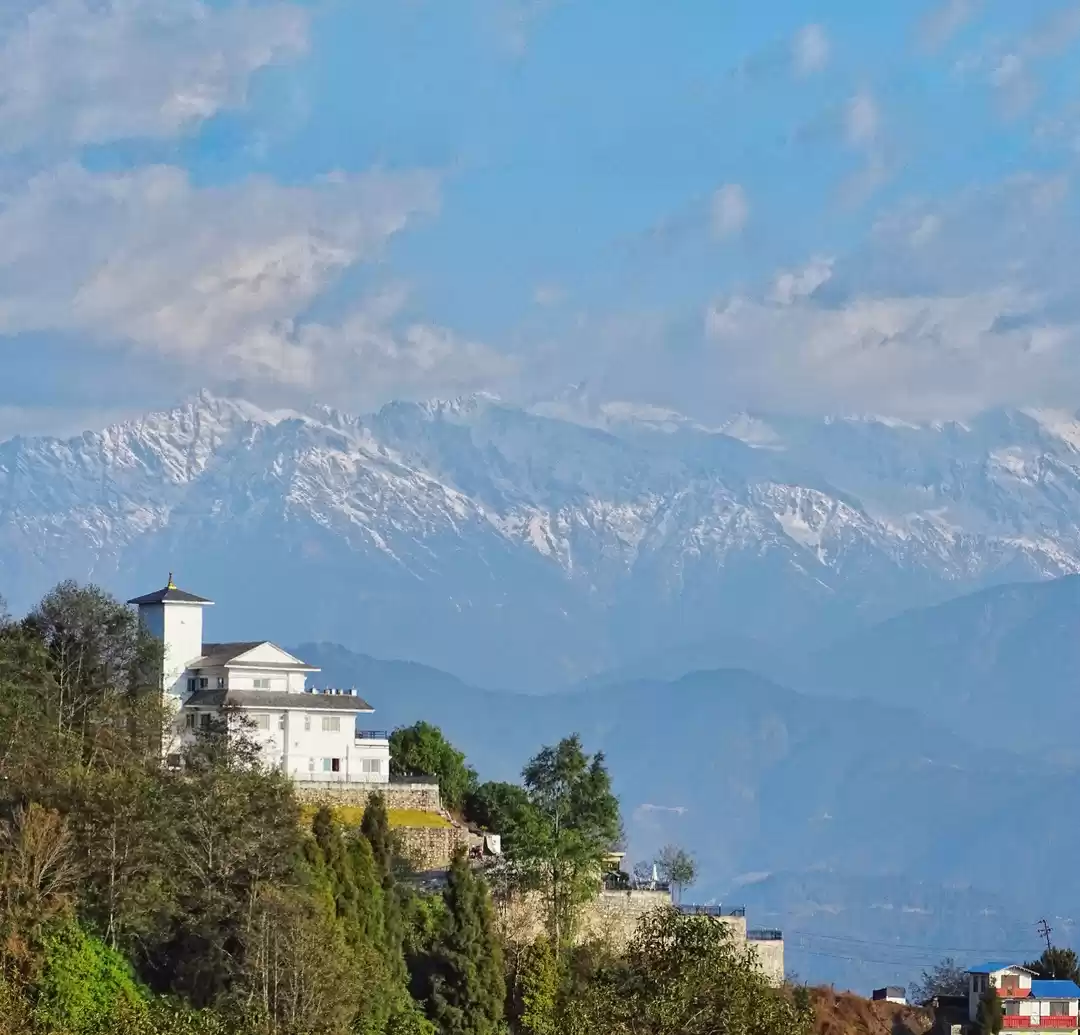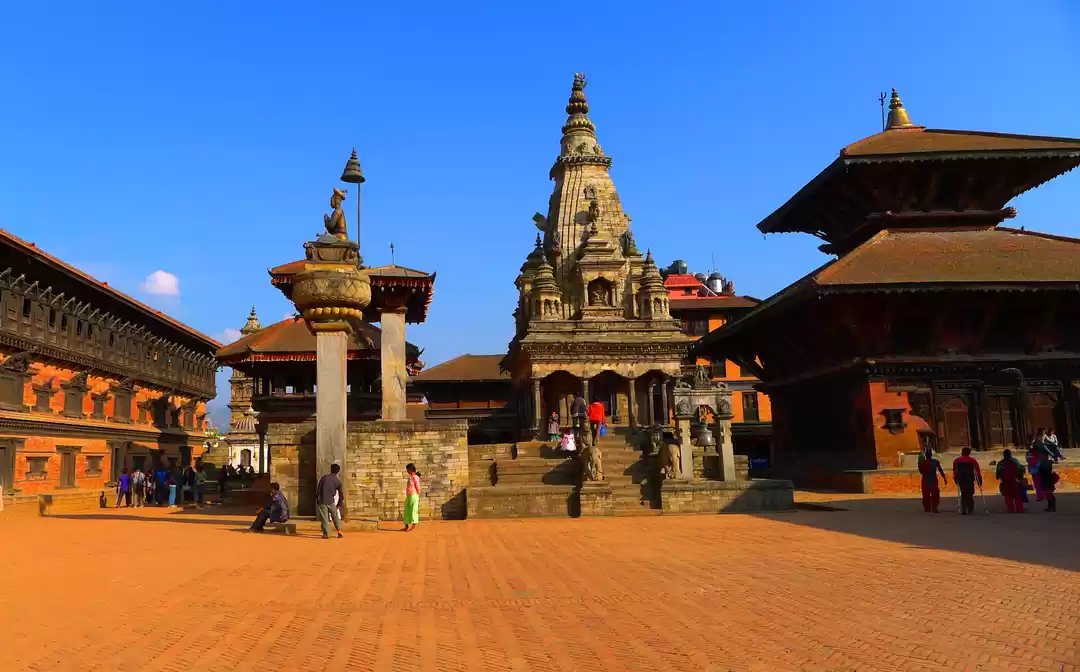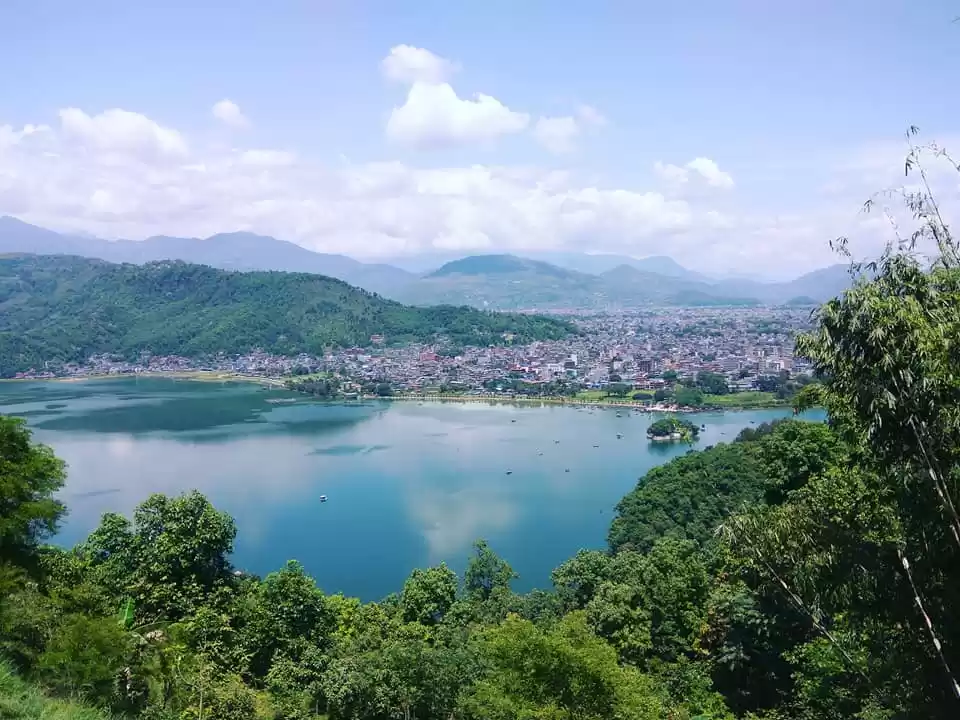Nepal, a neighbor of today's India which was a part of ‘Bharatvarsh’ in the past has already been very famous for its beauty and supernatural scenery. My journey to Nepal was to visit pre arranged places but as soon as I got there, it was fun to spend time with myself. Indians do not need a visa to travel to Nepal but it is mandatory to have a passport for immigration work.
For any traveler or tourist photographs may serve as a souvenir but for me it may be a "Time Travel". In the future when you will see those photographs and you find yourself at the same place that’s called "Time Travel" in common sense. October and November are the best months to visit Nepal after the end of the monsoon season but Diwali vacation is also there at the same time. So, I decided to travel in late May and the first week of June to stay away from the crowds and enjoy a few moments with nature in the foothills of the Himalayas.
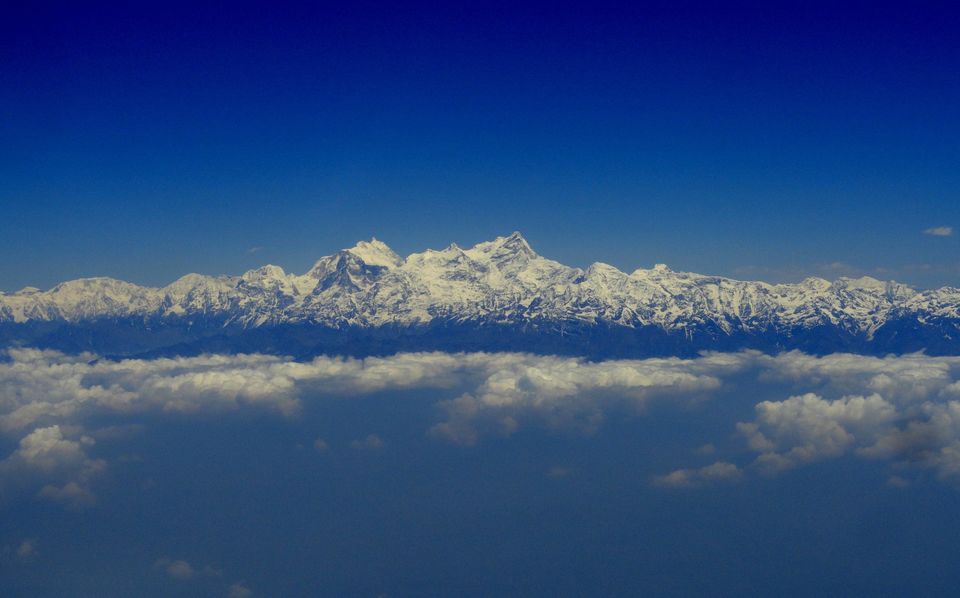
The journey from Vadodara (my hometown) to Delhi and from there to ‘Tribhuvan International Airport (KTM)’ in Kathmandu was very exciting. My mind was mesmerized by the magnificent views of the Himalayas seen from the window of the airplane. As soon as I got off the plane after landing, I enjoyed the first holy atmosphere in Kathmandu and from there I reached Nagarkot which is located at a distance of about 35-40 km and 1.5-2.0 hours. Nagarkot is a small village which is located far from the crowded and noisy city of Kathmandu with an elevation of about 2175 meters above sea level. Many of the Himalayan ranges can be seen from any hotel taken here and the peak of Mount Everest can also be seen with a closer look. I also enjoyed the sunset here with a cup of tea.


On the second day of my journey I took road to go to Pokhara which is 210 km away from Kathmandu city and after a journey of about 7-8 hours I reached the hill station at an altitude of 1400 meters. On the way to Pokhara, I visited the world famous wish-fulfilment temple known as 'Manakamana Devi'. I reached its peak by traveling via the longest ropeway (Cable Car) ever in my life. My ropeway journey lasted about 10-15 minutes and the river, valleys and long mountain ranges seen from the ropeway filled my mind with great enthusiasm and happiness. From here one can see the ‘Manaslu-Himachali’ and ‘Annapurna’ ranges of the Himalayas. The main temple was built in a sacred square among the magnolia trees. The catastrophic earthquake in April, 2015 changed the landscape of this beautiful country to a great extent and among all one of this place also became a victim. This temple of Goddess Bhagawati at the top was also badly damaged but seeing the reconstruction work in full swing gave me a lot of peace of mind.

As soon as I reached Pokhara I took the first boat ride and saw the temple of 'Bindhyabasini Devi' which was located on a small island. The idol replaced here in the time of Kashiraj is believed to have been brought from India. Some of the most captivating views of the Annapurna Range in the Himalayas while boating were a delight to any nature lover. A beautiful waterfall known as ‘Devi's Falls’ or ‘Patale Chhango’ is just located nearby and just opposite of the road 'Gupteswar Cave' is also located. The cave is so long that it can be reached as far as Devi's Falls. I was also amazed to see the natural limestone structures in the cave. In the early morning of the next day I drove for 45-50 minutes and reached Sarangkot which was at a height of about 1592 meters and was a little more scenic and cold than Pokhara. As soon as I saw the sunrise here in the morning all the fatigue of yesterday's journey subsided.

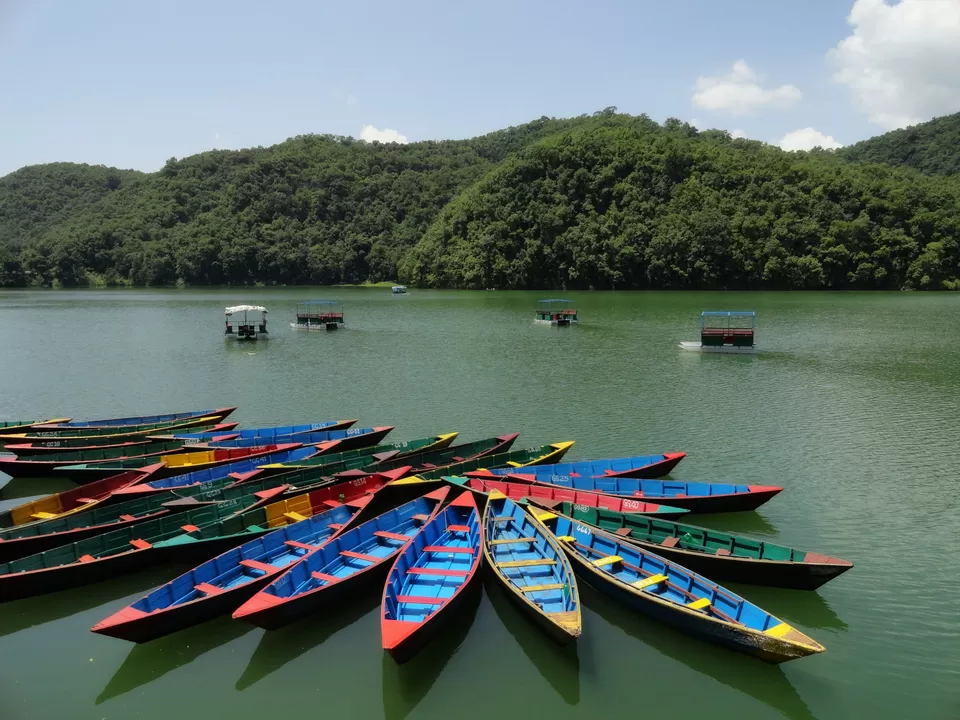
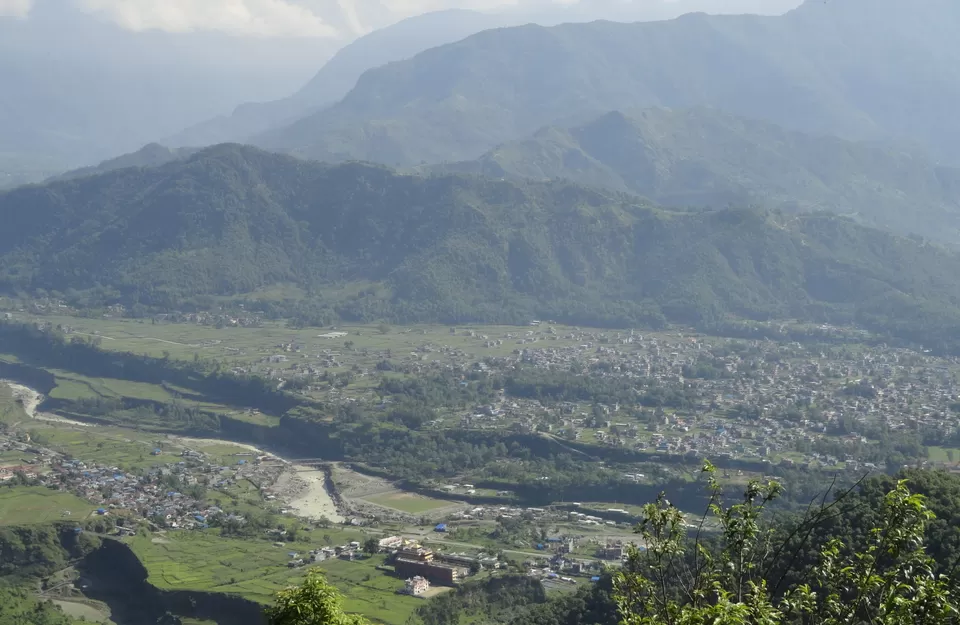
Making sense of the given name in the title, the next day of my journey sent me back to Kathmandu, the capital of Nepal. Kathmandu is the capital of Nepal as well as the largest city in the country. According to the 2010 World Bank the Kathmandu Valley is growing at an annual rate of 4% which is making it one of the fastest growing metropolitan areas in South Asia. Tourism is the main income source of this country as well as for the Kathmandu. The city of Kathmandu is also known as the ‘Gateway to Nepalese Himalayas’ and there are also many world heritage sites that I also visited. Kathmandu spoken in Nepali is actually derived from the Sanskrit word "Kashtmandapam". The architectural style of the different temples created by Newar people the centuries ago, the sculptures made of wood and the metal craft have made Kathmandu very famous in the world. On April 25, 2015 a 7.8 magnitude earthquake destroyed the city of Kathmandu on a large scale and damaged many historically important buildings.

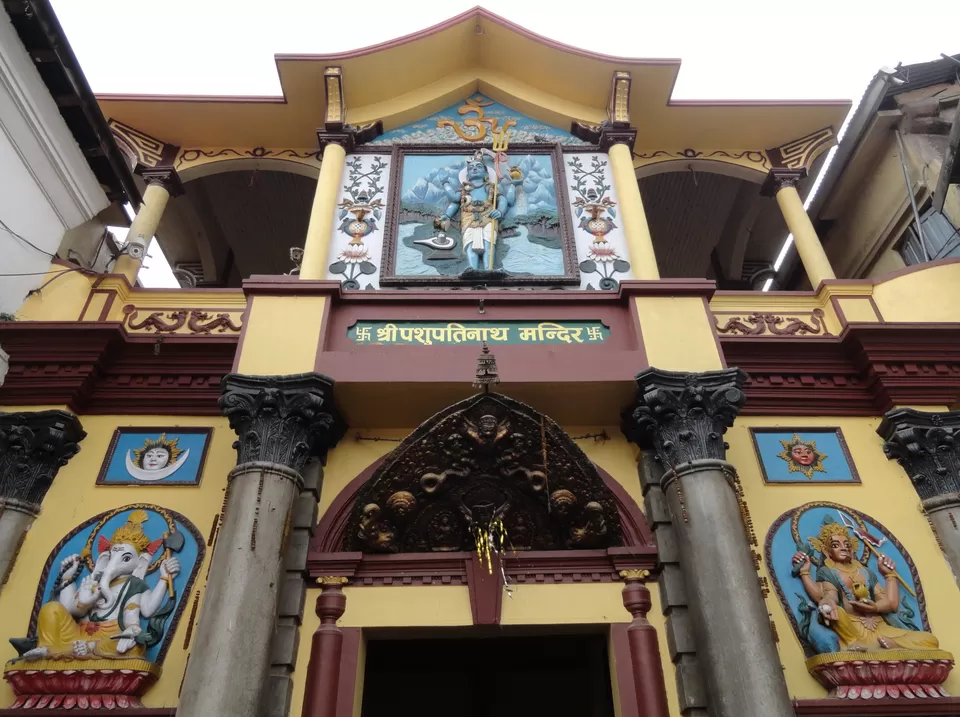
Kathmandu also known as the 'City of Temples' is home to the Pashupatinath Temple which is located at an altitude of 1400 meters above sea level and one of the four major holy sites in Asia. Kathmandu is a city that is Shivamaya itself and Shiva-Shiva can be heard in the air particles of the atmosphere. According to a belief it is imperative to complete the darshan of the twelve Jyotirlingas in India as well as to pay obeisance to Pashupatinath here for the fruit otherwise the holy journey of these twelve Jyotirlingas is considered incomplete. According to religious beliefs Pashupatinath located on the banks of the river Bagmati is the ‘Face part of Shiva’ of the Kedarnath (Panchkedar) Jyotirlinga. Large crowds of Shiva devotees as well as other pilgrims are seen here throughout the year. Known as the holiest place of pilgrimage for Hindus this temple must be visited by every Hindu at least once in his lifetime. UNESCO has also included this temple of Pashupatinath in the list of world famous heritage sites. Built in the Nepali style the temple has four doors, displaying the four faces or four directions of the spontaneous Shivlinga installed inside. Every man or every living being who comes here becomes Shivamaya and realizes the supreme infinite power. Located on the banks of the river Bagmati, the largest temple complex in the city of Kathmandu is believed to have been built in the 5th century and was later renovated by the Malla kings. The main temple is built in pagoda style with the main roof made of gold, silver and wood carved on all sides. Only Hindus can enter through the door of the main temple. Inside the garbhagriha of the temple a large Shivlinga is situated and in front of it is a huge statue of Nandi. Pashupatinath is a religious, cultural as well as spiritual center. The temple area includes Deupatan, JayaBageshori, Gaurighat, Gaushala, Pingalsthan, Slashmantak forest. Apart from this about 492 temples, 15 Shivalayas and 12 Jyotirlingas and many other small and big temples are situated. Apart from Nepal millions of people from all over India & Asia come here for the Mahashivaratri festival in the spring. There is also a temple of 'Guhyeshwori Devi' near this main temple which means that wherever Shiva resides there is Shakti resides too. This temple is also considered to be one of the 51 Shakti Peethas of India.


This is the birthplace of Lord Buddha (the ninth incarnation of Lord Vishnu) where he was born as Siddhartha sanctified the land and developed 'Buddhism', a worldwide symbol of peace today. After completing my visit to Pashupatinath I visited Swayambhunath Stupa and Boudhanath Stupa. Both these holy pilgrimages are considered to be very important for the people of Buddhism, so huge crowds of people are seen throughout the year. The Swayambhunath Stupa built in the 5th century, is famous for its colourful flags. Standing here I could able to see the most beautiful views of the entire city of Kathmandu. Swayambhunath Stupa is also known as 'Monkey Temple'. According to a Buddhist belief this lotus-shaped mountain suddenly sprang out of an ancient lake in the Kathmandu Valley about 2,000 years ago which spread over the entire valley at that time and that is why this place is called Swayambhunath. According to another legend story it was built by King Mandev in the 13th century. Behind the hill there is a temple dedicated to Goddess Saraswati. The entire temple complex is full of Hindu as well as Buddhist temples, Chaitya houses, Sleeping Buddha, Monastery, Bronze Buddha statues and Tibetan paintings. Other than that the whole hill is surrounded by prayer wheels and deities on almost all sides. This place is also one of the most preferred places for travelers coming from abroad. I also experienced an inner peace after visiting this place. The 'Buddhanath Stupa' is 36 meters high Stupa inspired by Tibetan Buddhism. This place came into light to a large extent as in ancient times the main route for traders from Tibet passed through here. Merchants stopped here for rest as well as for prayer. It’s a beautiful Stupa that captivates anyone's mind after being renovated by the Lichhavi kings, at the top of which are the eyes of the Buddha a symbol of awakening in all directions. Around the Stupa as well as behind the prayer wheels there are 147 incredible and 108 types of images dedicated to the Buddha.




There are total three Durbar Squares in Kathmandu Valley Kathmandu Durbar Square, Patan Durbar Square and Bhaktapur Durbar Square. Kathmandu Durbar Square located in the heart of the city, is historically very famous and the Nepali-style temples and architecture there enchanted the mind of any traveler. Kathmandu Durbar Square is a princely state of the ancient state of Kathmandu which is now located in the Basantpur area of Kathmandu. It is listed as a UNESCO World Heritage Site. The place has a heritage of Newari culture and ancient architecture for centuries. According to one belief the buildings here are believed to date back to the third century. It was first built by the Malla kings during the reign till 1720 and it is believed that most of the development of the region gained momentum during the reign of King Pratap Malla. Later King Jayaprakash Malla built a house for Kumari which is also known as Kumari Bahal. The virgin is considered a living goddess in Newari culture. It is also a privilege to visit the house of ‘Kumari-The Living Goddess of Kathmandu’ and see her. After the conquest of this place by Prithvi Narayan Shah where he ruled till 1820 and Nautal Darbar was built, it is a nine storey Basantpur Palace. Apart from this Shiva-Parvati temple was built after Prithvi Narayan Shah. After 1820 they left it as a place of residence and moved to Narayanhiti Palace. However, Kathmandu Durbar Square became an important venue for occasions like the coronation of the king in 2001 including the famous Gyanendra Bir Bikram Shah. Even today it is widely used for the annual festival of Indra Jatra. Apart from this there are many other spectacular temples and architectures in Durbar Square. Trilokya Mohan Narayan Temple dedicated to Lord Vishnu which has ancient images of Lord Vishnu. A large idol of Kalbhairav which is considered to be a destructive form of Lord Shiva is installed here to arouse fear in the mind and protect it from evil forces. The Taleju temple is considered to be the most magnificent work of art in Durbar Chowk. Kotilingeshwar Mahadev Temple is a stone temple of Shiva built by Mahendra Malla. One of the main sites of the Hanuman Dhoka complex is the Hanuman Dhoka Palace which has now been turned into a museum. Until the 19th century the place was used as a royal palace. I got very good information about the ruler timeline of ancient Nepal as well as culture and architecture. This place is called Hanuman Dhoka because there is a statue of Hanuman guarding the palace. The museum contains antiquities of the Malla kings. Also the history of the unification of Nepal by Prithvi Narayan Shah is preserved here as Prithvi Narayan Shah also used this place as a royal palace. Kathmandu Durbar Square also houses Shweta Bhairav, Jagannath Temple, Newari houses, Shiva-Parvati Temple (built by Bahadur Shah in the 18th century with every inch of the temple wall made of very intricate carvings), Tribhuvan Museum. Apart from this there are also many chowks like Kernel Chok, Mul Chok, Mohan Chok, Nasal Chok and Sundari Chok. Durbar Squares in Patan and Bhaktapur are as famous as Kathmandu. No matter how much you admire the architectural beauty and exquisite carving of wood, it is not enough. Bhaktapur Durbar Square is mainly famous for its 55-barred palace, statue of Bhupatindra Malla, art gallery, temple stones, works made of wood and the Golden Gate built by the Malla kings. There was also a five-storied temple, also known as the ‘Nyatapola Temple’ with five pagodas. Due to the catastrophic earthquake in April, 2015 a large part of the area was damaged. But once again I was happy to know that the Nepal Tourism Board was doing its utmost and the reconstruction of this country's famous architecture was underway. In the last leg of my journey I visited the Budhanilkantha Temple built in the 5th century and by Lichhavi. This temple dedicated to Vishnu was located a short distance from Kathmandu Valley and placed in the Shivpuri mountains. A large idol of Vishnu on the sidewalk is placed in the middle of the water. This 5 meters long statue made of black basalt is the largest single stone statue in Nepal. Phulchowki the highest hill in the Kathmandu Valley at a height of 2791 meters has beautiful gardens adorned with beautiful wild roses, yellow jasmine, iris and other flowers.


In Nepal especially in Kathmandu dal-rice and momos are mainly eaten. But in today's world Kathmandu has become the world's famous food capital mainly because the famous dishes of all the major countries of the world are easily available here. Nepali cuisine is largely influenced by India and Tibet. ‘Newari’ and ‘Thakali’ cuisines can be tasted for authentic Nepali taste. In this quiet city many festivals as well as occasions are celebrated in which people of both Hindu and Buddhist religions celebrate together.
Before returning to India, I made up my mind to do some shopping on the last evening and that was why I chose to go to the famous Thamel Market in Kathmandu. Thamel Market was a place where a lot of movies were shot especially I visited the place where our Bollywood movie ‘Baby’ was shot. This market with small streets was reminiscent of our Ahmedabad’s polls. There were a variety of items available in this market that could attract any traveler or tourist. Nepal is also famous for its original Rudraksha. I also did a lot of shopping from here on the last day of my journey and also enjoyed the main food dishes there. I returned to India with a heavy heart carrying many memories. As a traveler, a devotee, a philosopher and a common man I believed that everyone should go to this holy land once and spend some time with Shiva, Buddha and himself.
Other useful information: -
1) The best time to visit Nepal is October & November months after the monsoon. The nature and open sky after the rain is considered suitable for trekking. From March to June is also a good one option to visit.
2) Non-stop airline service is available from Delhi to Kathmandu as well as one-stop airline services from cities like Ahmedabad, Mumbai and Kolkata. Kathmandu city is connected to all other cities of Nepal by air and motor.
3) There are many hotels available of different budgets in Kathmandu. Hotel information can be found at sites like www.makemytrip.com, www.booking.com and www.agoda.com. Vegetarian food is easily available in Kathmandu, staying in hotels with vegetarian restaurants is beneficial.
4) 1 Rupee of India = 1.60 Nepalese Rupee in Nepal. Indian currency notes (100 & 500) are in circulation in Nepal, but Nepali currency notes can still be obtained from foreign exchange at the airport. SIM cards can also be obtained from the airport.
5) Due to the hilly terrain as well as trekking, it is advisable to keep sports shoes, warm clothes and required medicines.
6) Nepal Tourism website for more details: www.welcomenepal.com and www.visitnepal2020.com
7) The mysterious animal of the Himalayas is called Yeti, which is seen in the Nepali Himalayas by many people walking on the secluded path of the Himalayas.
8) Nepal was the last Hindu country in the world when it was declared secular by Parliament in 2006.
9) The world famous warriors ‘Gurkha’ are from Nepal. Protected by the world’s bravest fighters, Nepal has not an independent day as it has never been won by any of the world’s superpowers. Nepal is the only country in the world whose flag is not rectangular. Nepal has 8 of the 10 highest mountains in the world, including the world's highest peak Mount Everest (8848 meters).

